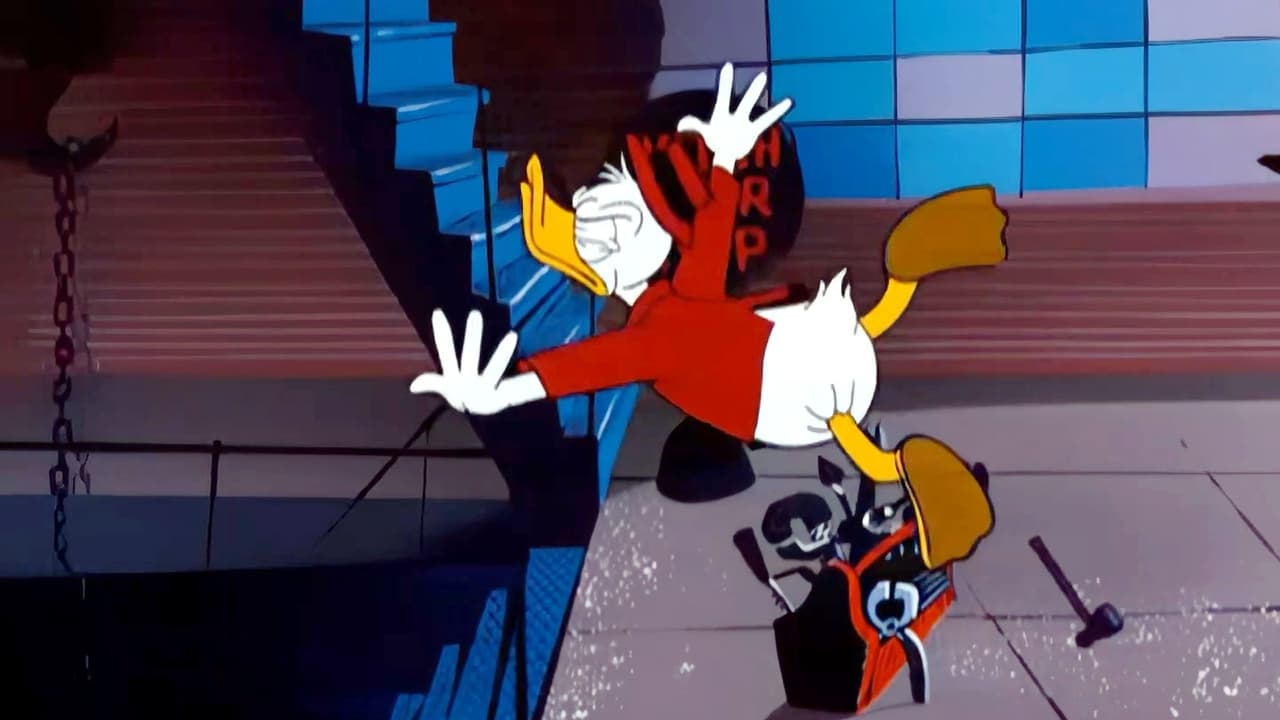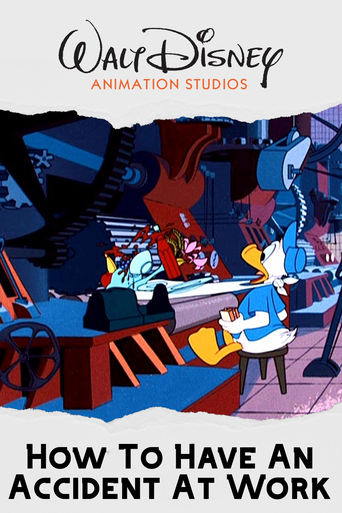

Wonderful character development!
... View MoreThe greatest movie ever!
... View MoreJust intense enough to provide a much-needed diversion, just lightweight enough to make you forget about it soon after it’s over. It’s not exactly “good,” per se, but it does what it sets out to do in terms of putting us on edge, which makes it … successful?
... View MoreIt is an exhilarating, distressing, funny and profound film, with one of the more memorable film scores in years,
... View MoreThis another cartoon short I first saw when it as part of the episode, Man Is His Own Worst Enemy, of Walt Disney's Wonderful World of Color. It features the character J.J. Fate who tells about some people's carelessness at the workplace, with Donald Duck as the prime example. What results are classic and hilarious scenes featuring Donald having mishaps around his job in a construction company, including getting himself caught in the conveyor belt toys, getting tools caught in the machinery and getting things caught on fire.It displays good classic Donald humor, gags and energy and also also leaves a good lesson and message to follow the workplace rules to avoid accidents. This cartoon short, I think, is not as funny as the "How to Have an Accident at Home" cartoon but it's still darn fun.Grade B+
... View MoreLike the short it follows on from(How to Have an Accident at Home), How to Have an Accident at Work is every bit as good and interesting. The animation is not everybody's cup of tea but looks fine, the background art is very abstract but also very colourful and the characters are thickly drawn but still appealing. The music is orchestrated beautifully and filled with energy, enhancing the action very nicely. The gags, revolving around Donald's various accidents, are inventive to look at and funny in how Donald deals with it. Especially funny is how he manages to wreck an entire machine for eating his lunch and the machine goes on to destroy the factory and leaving Donald in the hospital wing. The story is simple but paced efficiently, not allowing the energy to flag. Donald is as ever charismatic and temperamental, helped by the gags and the story which play to his strengths. JJ Fate adds to the fun, his narrative is entertaining and somewhat interesting too. Clarence Nash and Bill Thompson are excellent as the two characters. In conclusion, every bit as well done as its predecessor. 10/10 Bethany Cox
... View MoreThis is one of my all-time favorite shorts. It features Donald Duck as a worker in some type of factory or machine type shop.J.J. Fate (?) narrates while Donald participates in some very dangerous behaviors at work. He uses the machines to slice his lunch meat and cheese. He sets up his lunch on another machine complete with a table cloth and a flower in a vase. He wears loose clothing around dangerous machines, behaves dangerously near flammable items, and even looses his focus when he stares at a beautiful woman walking by.Overall this is a very good cartoon short and hopefully this will see a release on DVD in the future along with the previous short "How to Have an Accident in the Home".
... View MoreA Walt Disney Cartoon with DONALD DUCKDonald demonstrates HOW TO HAVE AN ACCIDENT AT WORK.This informative little film cautions against wearing loose clothing near dangerous machinery, unsafe behavior around flames and the need for constant concentration. A follow-up to HOW TO HAVE AN ACCIDENT IN THE HOME (1956). Daisy has a cameo as Donald's blasé spouse; Clarence Nash provides the Duck with his unique voice.Walt Disney (1901-1966) was always intrigued by pictures & drawings. As a lad in Marceline, Missouri, he sketched farm animals on scraps of paper; later, as an ambulance driver in France during the First World War, he drew comic figures on the sides of his vehicle. Back in Kansas City, along with artist Ub Iwerks, Walt developed a primitive animation studio that provided animated commercials and tiny cartoons for the local movie theaters. Always the innovator, his ALICE IN CARTOONLAND series broke ground in placing a live figure in a cartoon universe. Business reversals sent Disney & Iwerks to Hollywood in 1923, where Walt's older brother Roy became his lifelong business manager & counselor. When a mildly successful series with Oswald The Lucky Rabbit was snatched away by the distributor, the character of Mickey Mouse sprung into Walt's imagination, ensuring Disney's immortality. The happy arrival of sound technology made Mickey's screen debut, STEAMBOAT WILLIE (1928), a tremendous audience success with its use of synchronized music. The SILLY SYMPHONIES soon appeared, and Walt's growing crew of marvelously talented animators were quickly conquering new territory with full color, illusions of depth and radical advancements in personality development, an arena in which Walt's genius was unbeatable. Mickey's feisty, naughty behavior had captured millions of fans, but he was soon to be joined by other animated companions: temperamental Donald Duck, intellectually-challenged Goofy and energetic Pluto. All this was in preparation for Walt's grandest dream - feature length animated films. Against a blizzard of doomsayers, Walt persevered and over the next decades delighted children of all ages with the adventures of Snow White, Pinocchio, Dumbo, Bambi & Peter Pan. Walt never forgot that his fortunes were all started by a mouse, or that childlike simplicity of message and lots of hard work always pay off.
... View More